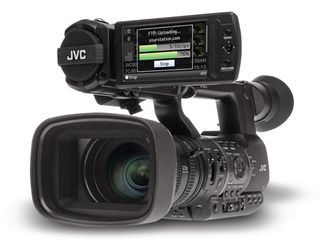Big News Comes to Smaller Markets

Given current trends in consolidation and news efficiencies, broadcasters are working hard to expand news operations in smaller markets. Nexstar Broadcasting Group’s plan to launch a news operation at WJMN, the CBS affiliate serving Michigan’s Upper Peninsula and the city of Marquette in DMA 180 provides a case study in some of the technologies that are making such operations economically viable.
Nexstar purchased the CBS affiliate WFRV in Green Bay, Wis., and WJMN in 2011 for about $20 million. Until recently, WJMN, which is branded Local 3, had been airing WFRV’s news with a weather forecast customized for Marquette and the Upper Peninsula. WJMN had a sales team and other operations in Marquette, but the key technical facilities were located at WFRV, which sends WJMN’s signal from its master control to a transmitter in Escanaba, Mich.
“We’re now going to the next level where we will have a local newscast at WJMN with probably eight to ten news people, a full production control room and a new HD news studio,” says Blake Russell, senior VP of station operations at Nexstar. The facility will also house a manager, about six sales people, a creative services person and engineering support.
To produce the newscasts, which will air weekdays at 6 and 11 p.m. starting on April 21, Nexstar built a new 4,500-square-foot broadcast facility west of Marquette in a mall that will be named WJMN Plaza.
“We decided that if we were going to do this, we would do it right,” Russell says. “So we spared no expense on the news set and everything is full HD.” They have also deployed a Ross Carbonite switcher for the production control room, and a WSI weather system and are equipping their video journalists with GY-HM650 ProHD camcorders, which have Internet connectivity.
Initially, they won’t be using the camera’s Internet connectivity to stream video back to the production control room in Marquette. But eventually that feature and bonded cellular technologies will play a key role in their newsgathering efforts and help control costs. “We won’t necessarily have an ENG truck in that market because frankly we don’t need one with today’s technologies,” Russell says. “We can go live by other means.”
Tapping Into the Core
Broadcasting & Cable Newsletter
The smarter way to stay on top of broadcasting and cable industry. Sign up below
The broadcast group also worked to tie the new WJMN infrastructure in with WFRV’s news operation, a move that allowed them to save significant amounts of money. “We wanted this build to operate exactly the same way as Green Bay,” says Russell.
As a result of that decision, Nexstar purchased additional seats at the WFRV Avid iNews newsroom system and is using the same graphics package. “We’re doing this as a kind of extension off the Green Bay core so when people sit down to iNews, they are accessing the Green Bay System with all the graphics,” Russell says. “It’s the same core technologies, and Avid has been a great partner in helping us do this.”
The weather system also mirrors the Green Bay station’s infrastructure and like WFRV, the new WJMN production control room won’t be using automation. “There is a tremendous amount of engineering support and training that has to go along with that,” Russell says. “For a market this size we do have limited resources.”
WITH HUB, NEXTSTAR STATIONS ARE SPOKE-N FOR
As it has built a number of new broadcast news facilities in recent years, Nexstar Broadcasting Group has often used hub and spoke architectures, with one station supplying centralized master control services for several stations in a region. It has also built a centralized iNews server system in Dallas and a disaster recovery system in Houston that currently serves “seven or eight stations,” says Blake Russell, senior VP of station operations at the station group.
In those operations, the news feed from a spoke station is typically sent to the master control at the hub, where it is combined with local ads and other materials before being sent back to the spoke station, which sends the newscast to the transmitter.
The new WJMN operation is different because there was already an Ethernet circuit to the master control at WFRV in Green Bay, which would send the newscast along a separate path to the transmitter in Escanaba.
